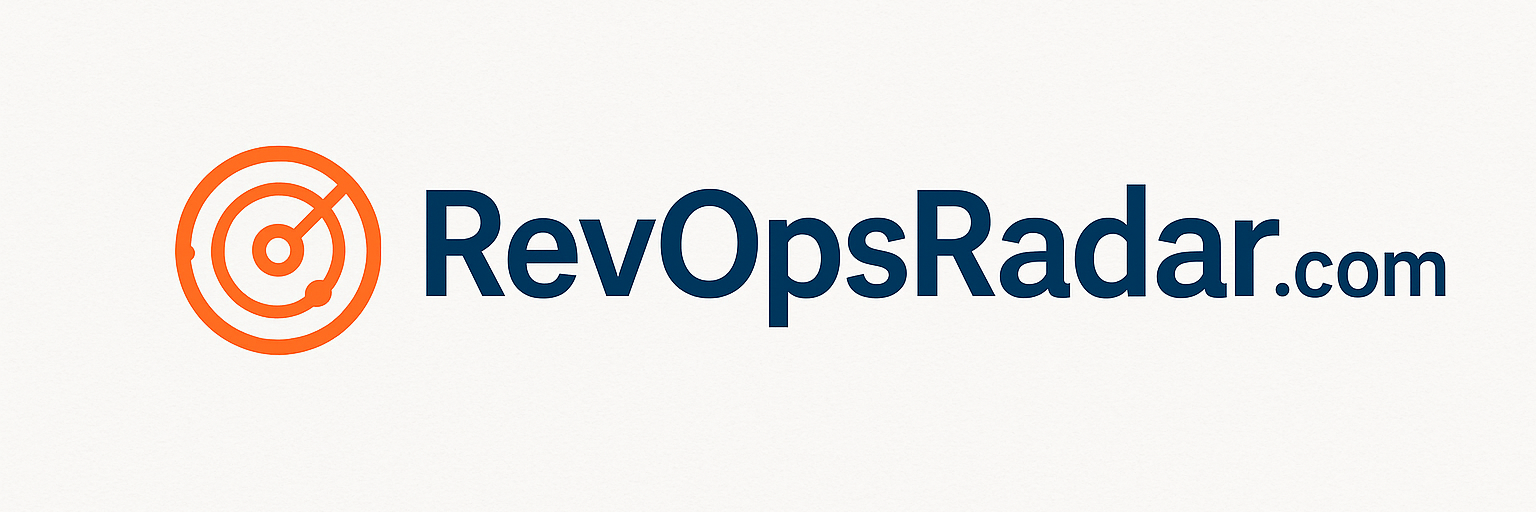Ask around in Sales or RevOps, and you’ll often hear the same thing: quota systems feel broken. Not necessarily because the math is wrong, but because the logic behind them is shallow, the rollout is clumsy, and the people responsible for hitting the number don’t fully believe in it.
Over the years, I’ve worked in Sales Ops and RevOps across B2B SaaS and telematics. I’ve seen firsthand how a well-structured quota system can elevate a sales team—and how misaligned ones can create friction or erode trust, even among high performers. Designing effective quota systems isn’t about throwing darts at last year’s numbers. It’s about creating alignment, motivation, and a path to performance that feels grounded in reality.
This article pulls everything together—how quotas are set, how they’re rolled out, and what separates quota systems that scale from the ones that crumble under pressure.
How Quotas Are Set — And Why the Method Matters
Most companies fall into one of four core approaches to setting quotas. Each has its strengths. Each has blind spots. Let’s look at what they are—and when they work.
Historical performance-based models are the most common. You take last year’s number and tack on a growth target. It’s easy and familiar, but it often punishes top performers and rewards low baselines. It also ignores changes in territory potential, product mix, or market conditions.
Market potential-based models attempt to correct for that by tying quotas to territory opportunity. If a rep is sitting on a high-density territory of ideal customers, their quota reflects it. This method is fairer—in theory—but depends on reliable data and can be misunderstood by the team if not communicated clearly.
Activity-based quotas are useful when reps can’t directly control revenue—think SDRs or reps in onboarding. By focusing on inputs (calls, demos, emails), you build rhythm and pipeline discipline. But left unchecked, it becomes a box-checking exercise rather than a path to revenue.
Hybrid models are where many companies land. You blend revenue and activity, history and potential. When built well, they reflect business priorities and role-specific nuances. When built poorly, they confuse everyone.
The trick isn’t picking the one true model. It’s picking the right model for the right context—and having the operational muscle to support it.
Rollout Timing and Quota Carryover
Once you choose a model, the next critical question is how and when to communicate quotas to the team. There are really two layers here, and they often get conflated:
- Quota cadence – whether your targets are structured on an annual, quarterly, or monthly basis.
- Quota visibility – how much of that cadence you show the reps up front, and how much flexibility you preserve by staggering the rollout.
Let’s take them one at a time.
Quota Cadence
Annual quotas give reps a long-term target aligned with the company’s strategic plan. They work well in stable environments with long sales cycles but can feel static if market conditions shift.
Quarterly quotas offer more flexibility and allow for course correction. They align with typical business rhythms but can increase administrative burden.
Monthly quotas are often misunderstood as micromanagement. But in practice, they provide short feedback loops, clearer pacing, and more timely coaching. Even if your formal cadence is annual or quarterly, I recommend layering in monthly targets for focus and clarity.
Quota Visibility and Rollout
Regardless of cadence, the decision of when to show the rep their number is strategic. Do you publish the entire year’s quotas on day one? Or release them quarterly or monthly to maintain optionality?
Each approach has trade-offs:
- Rolling out the full year of quotas builds transparency and allows reps to plan ahead. It signals stability and trust.
- Staggered rollout (e.g., one quarter or month at a time) gives leadership the flexibility to adjust based on market shifts, new product launches, or macroeconomic changes. But reps may view midstream increases as punitive.
A common best practice: lock and publish the next quarter’s quotas in advance, while reserving the right to adjust future periods with appropriate notice. That balance allows agility without undermining rep confidence.
Quota changes, especially upward, are always sensitive. Once a number is published, raising it feels like punishment, even if justified by new opportunity. If you’re going to preserve the ability to adjust, do it deliberately, communicate the “why,” and avoid surprises.
The most effective systems assign an annual target with seasonal weighting, monthly pacing targets, and rolling visibility into future expectations. This hybrid approach keeps reps grounded while giving leadership the levers to navigate dynamic conditions.
Should Unmet Quota Roll Forward?
Another important consideration often overlooked is whether unmet monthly quotas should carry forward to future periods. In other words, if a rep falls short in January, do you expect them to make it up in February? Or is each month treated as a fresh slate?
This decision shapes rep psychology. Rolling quotas forward can maintain accountability and reinforce the idea that total attainment is what matters. But if not handled carefully, it can also create a compounding burden that discourages reps after a slow start.
Treating each month as a clean slate helps reps reset and refocus. It encourages consistency rather than recovery-mode desperation. This approach works especially well when monthly pacing is used to guide behavior, while commissions and performance reviews are still tied to quarterly or annual goals.
Best-in-class systems often do both: they track performance cumulatively but coach and pace month-by-month. This keeps performance visible while preserving rep motivation. Just be clear in how shortfalls are interpreted – are they learning signals, or liabilities that stack?
Like most things in quota design, clarity is more important than rigidity. Whatever your approach, define it, communicate it, and use it to develop – not drain – your team.
Design with Real-World Constraints in Mind
Quota-setting isn’t theoretical. It’s messy. The best systems are built with both strategic intent and operational humility.
Start with top-down goals, but don’t ignore bottom-up reality. Your board may need $30M this year—but if your territory and rep data say $23M is realistic, you need to reconcile that gap before pushing quotas down.
Not all reps are on equal footing. Some are assigned dense territories filled with high-potential customer profiles. Others are ramping, inheriting fragmented territories, or starting from scratch. Your model should adjust for territory potential and tenure to maintain credibility and motivation.
Then there’s seasonality. SaaS sales don’t distribute evenly across the calendar. Some companies see a rush in Q1, others peak in Q4, and summer months often slow down across the board. The key is to recognize that not all quarters carry equal weight—and your quota model should reflect that.
Want to drive strategic priorities? Use quota structure to do it. If you’re launching a new product, emphasizing multi-year deals, or pushing net retention – bake it in. Quota is a blunt instrument, but it can still point the team in the right direction.
Finally, use data to keep it honest. Track how quotas were built. Document assumptions. Monitor attainment. A useful benchmark: aim for roughly 60–70% of reps to hit quota. If far fewer are attaining, your targets may be misaligned. If nearly everyone is crushing it, they might be too soft. Quotas that can’t be defended, or that consistently miss the mark, lose their influence fast.
The System That Scales
Quota isn’t just a number. It’s a system. A signal. A story about what success looks like.
When done right, it motivates the middle, challenges the top, and supports the bottom. When done wrong, it alienates everyone – and erodes the trust that quota is supposed to build.
There is no perfect quota formula. But there is a better way:
- Choose a model that fits your business
- Roll it out with clarity, pacing, and trust
- Design for fairness, flexibility, and focus
- Use data to validate and evolve the system
The best quota systems don’t just reward top performers. They create more of them.

